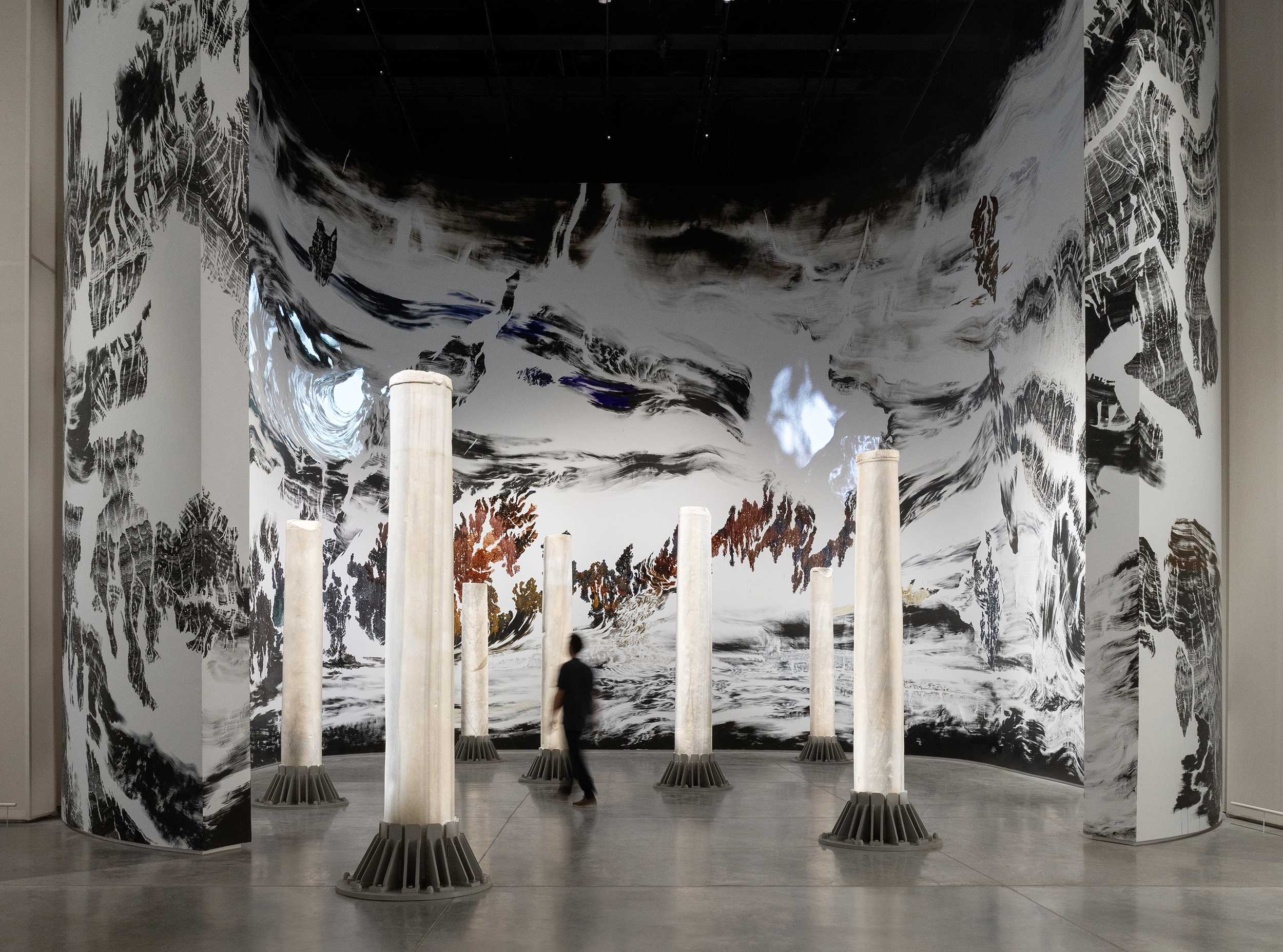
Abdelkader Benchamma
Islamic Arts Biennale
Abdelkader Benchamma participates in the second edition of the Islamic Arts Biennale in Diriyah.
January 25 – May 25, 2025
Diroyah Biennale Foundation – Jeddah
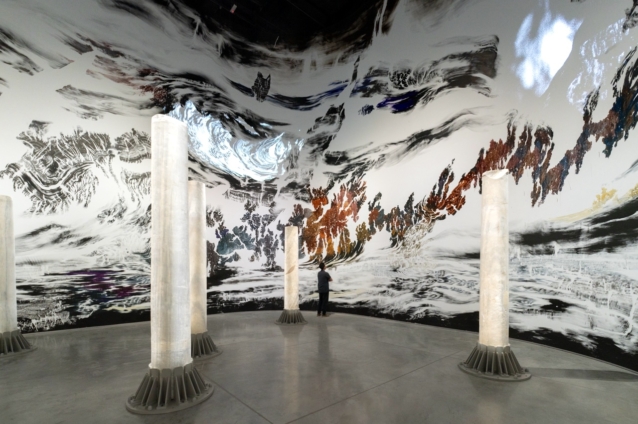
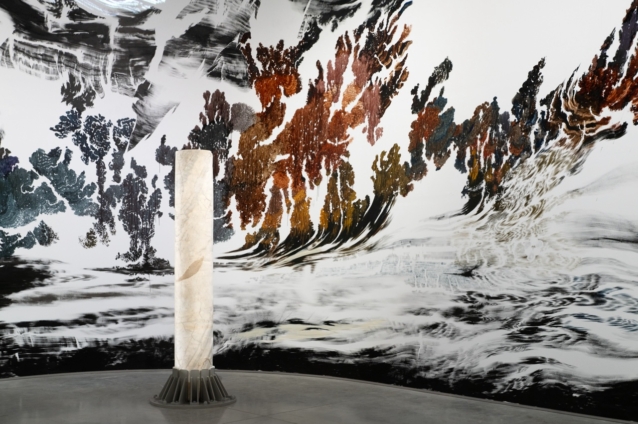
The installation also contains seven columns from Mecca, evoking the all-important number seven, an esoteric number frequently mentioned in the Koran and in many other faiths and religions. Many suras refer to the seven heavens that make up the universe.
The artist links these seven celestial strata to certain astrophysical conceptions: the planets are part of a solar system, which in turn is part of the Milky Way, itself included in a gigantic supercluster, then the filaments of galaxies, and so on.
This conception of the infinitely large is reflected in a mise en abyme of terrestrial strata: the columns are made of sedimentary rock composed of billions of shells that have resorbed over the millennia, preserving the memory of the world. Together with the drawings, they create a geological matrix in perpetual evolution.
Abdelkader Benchamma invites visitors to a reflective, almost meditative experience, in which the boundaries of time and space are blurred.
JANUARY 25 – MAY 25, 2025
SATURDAY – THURSDAY: 12PM – 11PM
FRIDAY : 2PM – 11PM
DIRIYAH BIENNALE FOUNDATION – JEDDAH
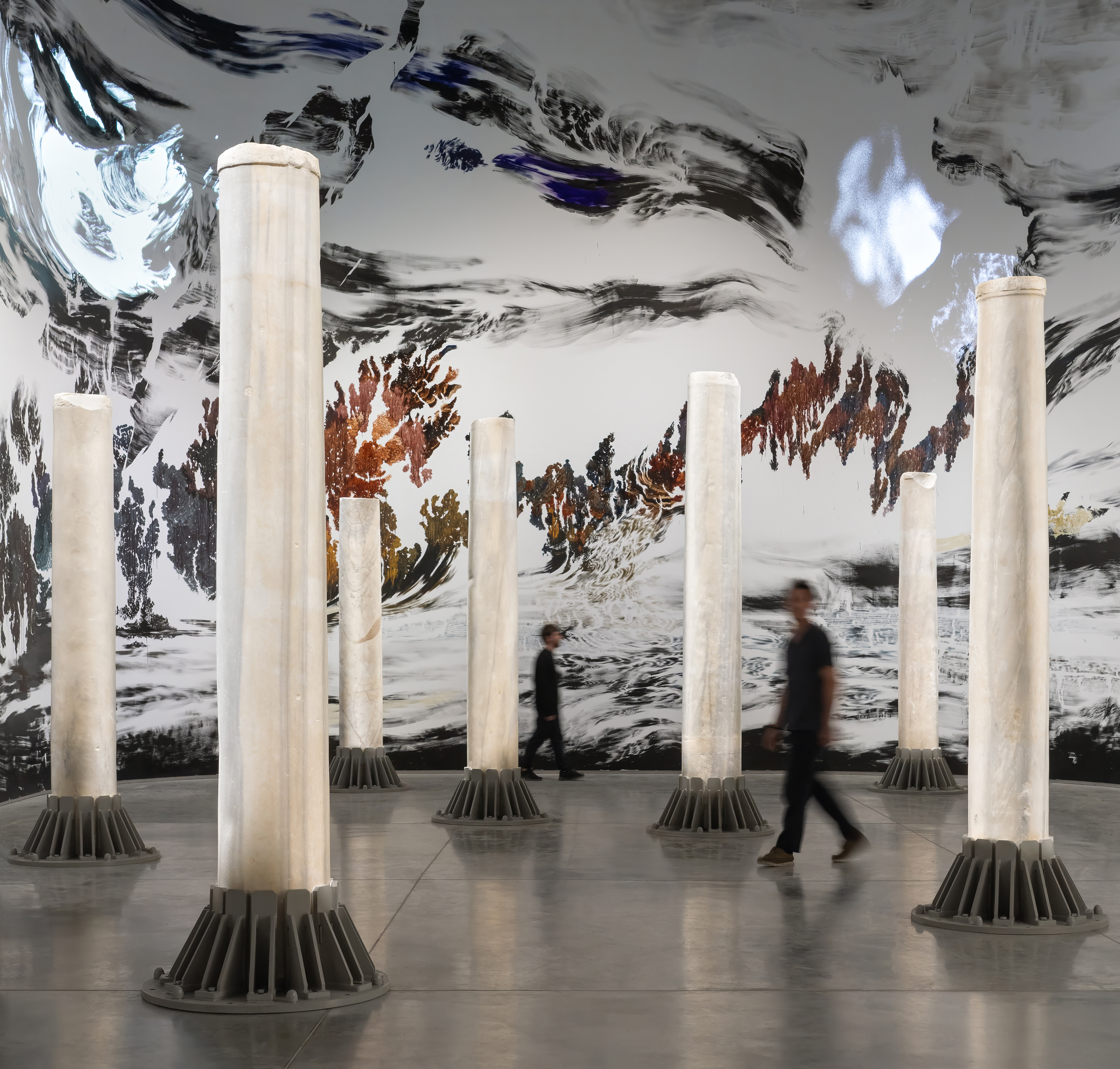
The artist
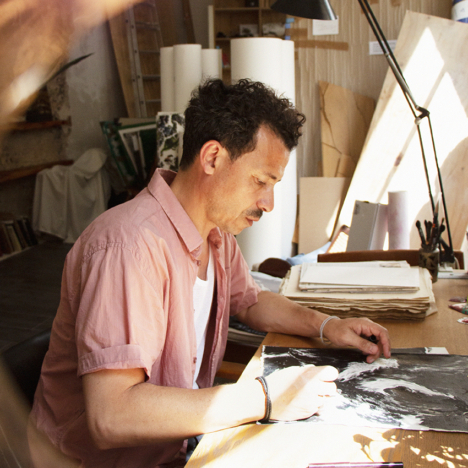
Born in 1975 in Mazamet (France), Abdelkader Benchamma lives and works in Paris and Montpellier.
A graduate of the Beaux-Arts de Montpellier and the École des Beaux-Arts de Paris, his preferred medium is drawing.
Nourished by literature, philosophy and astrophysics, his drawn installations continually challenge exhibition spaces, becoming, in his words, “spaces of resonance”, conducive to the summoning of memories, both individual and collective, geological and spiritual.
His vast ephemeral frescoes are painted directly onto walls with ink, transforming architecture into an otherworld, a world of flux and mental landscapes, between the recognizable and the indiscernible, on the border between the physical and the symbolic. Reflecting on the workings of perception, his works explore our systems of knowledge, the survival of myths and beliefs, but also reminiscences, retinal or neuronal persistence, whether on museum walls or sheets of paper.
